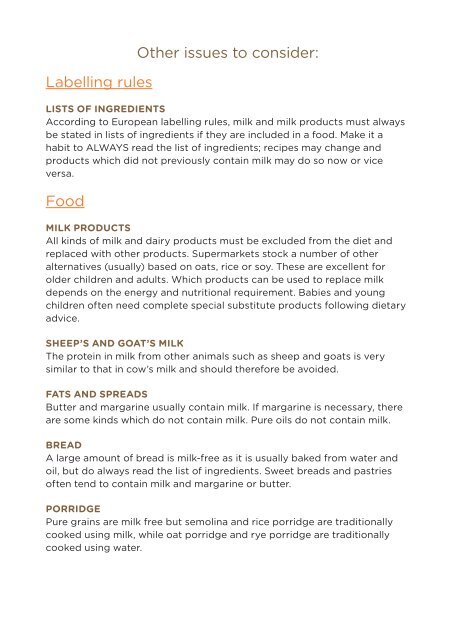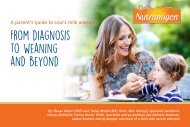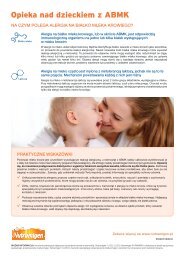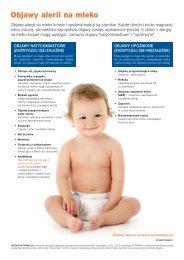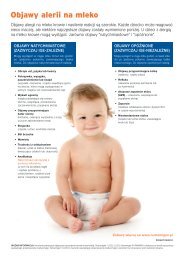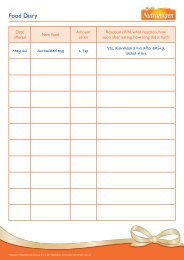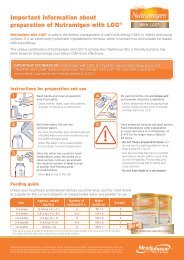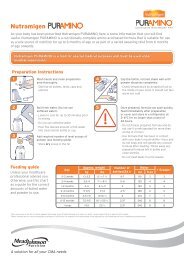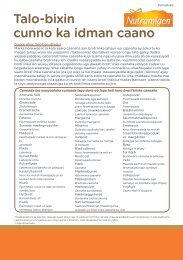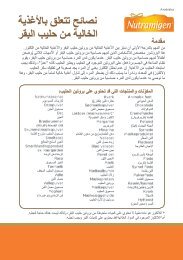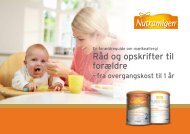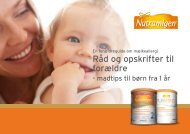Create successful ePaper yourself
Turn your PDF publications into a flip-book with our unique Google optimized e-Paper software.
Labelling rules<br />
Other issues to consider:<br />
LISTS OF INGREDIENTS<br />
According to European labelling rules, milk and milk products must always<br />
be stated in lists of ingredients if they are included in a food. Make it a<br />
habit to ALWAYS read the list of ingredients; recipes may change and<br />
products which did not previously contain milk may do so now or vice<br />
versa.<br />
Food<br />
MILK PRODUCTS<br />
All kinds of milk and dairy products must be excluded from the diet and<br />
replaced with other products. Supermarkets stock a number of other<br />
alternatives (usually) based on oats, rice or soy. These are excellent for<br />
older children and adults. Which products can be used to replace milk<br />
depends on the energy and nutritional requirement. Babies and young<br />
children often need complete special substitute products following dietary<br />
advice.<br />
SHEEP’S AND GOAT’S MILK<br />
The protein in milk from other animals such as sheep and goats is very<br />
similar to that in cow’s milk and should therefore be avoided.<br />
FATS AND SPREADS<br />
Butter and margarine usually contain milk. If margarine is necessary, there<br />
are some kinds which do not contain milk. Pure oils do not contain milk.<br />
BREAD<br />
A large amount of bread is milk-free as it is usually baked from water and<br />
oil, but do always read the list of ingredients. Sweet breads and pastries<br />
often tend to contain milk and margarine or butter.<br />
PORRIDGE<br />
Pure grains are milk free but semolina and rice porridge are traditionally<br />
cooked using milk, while oat porridge and rye porridge are traditionally<br />
cooked using water.


